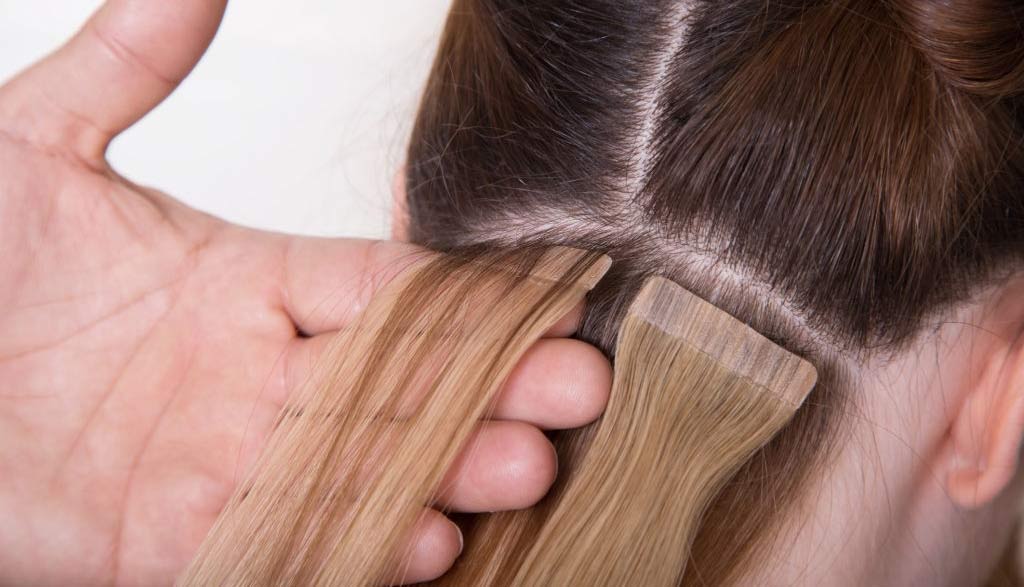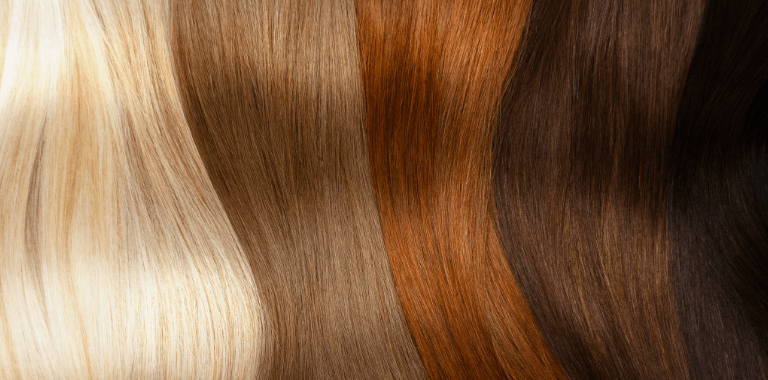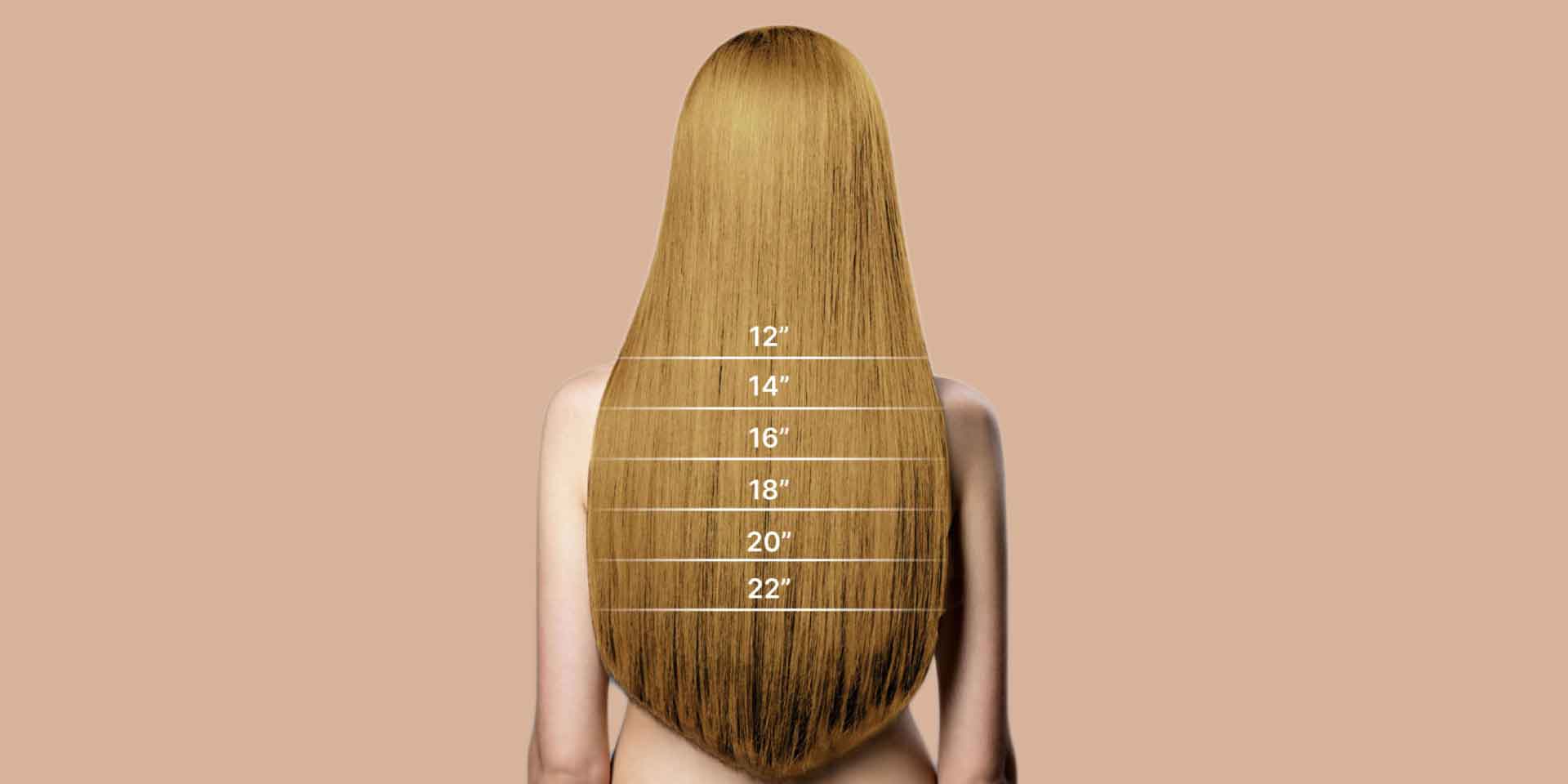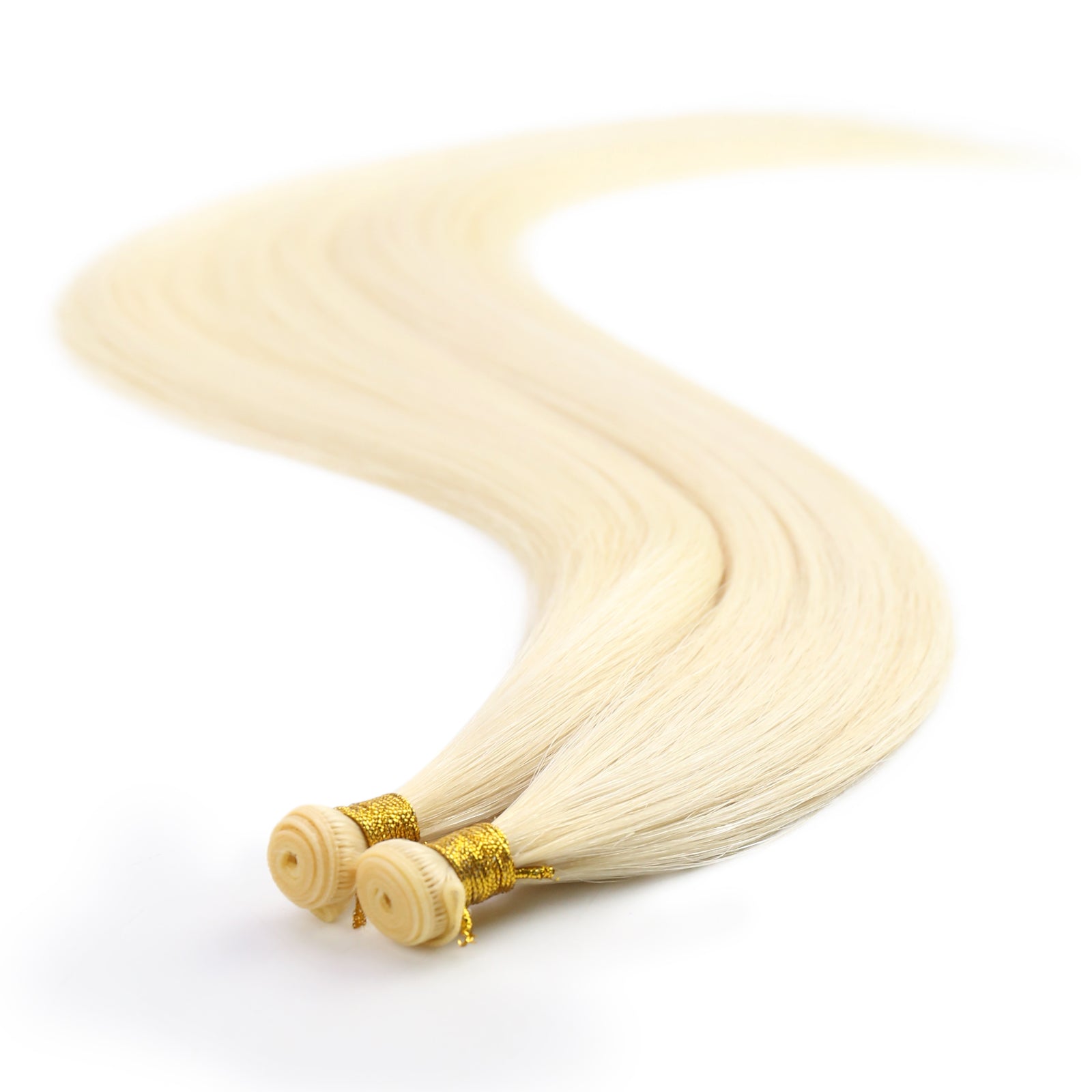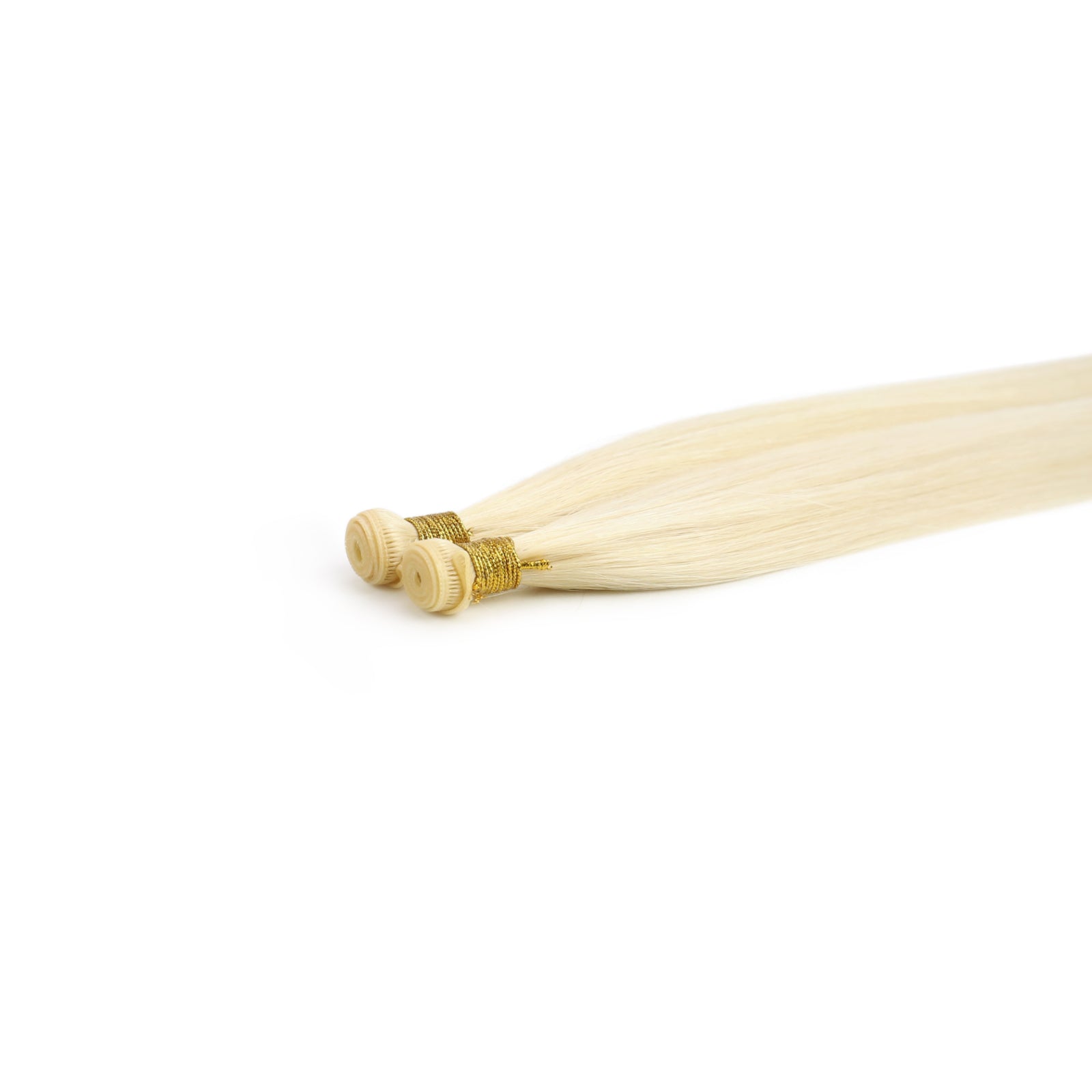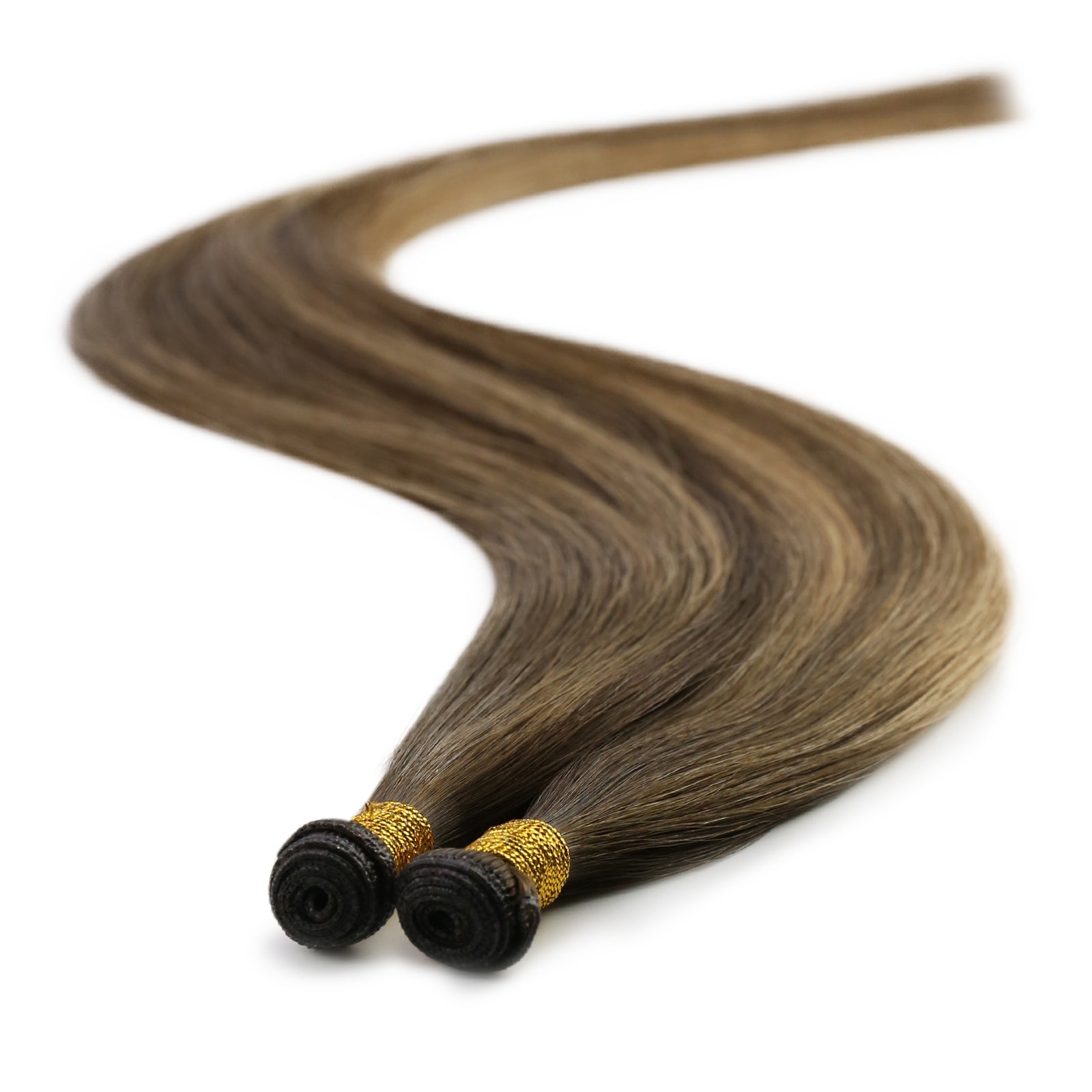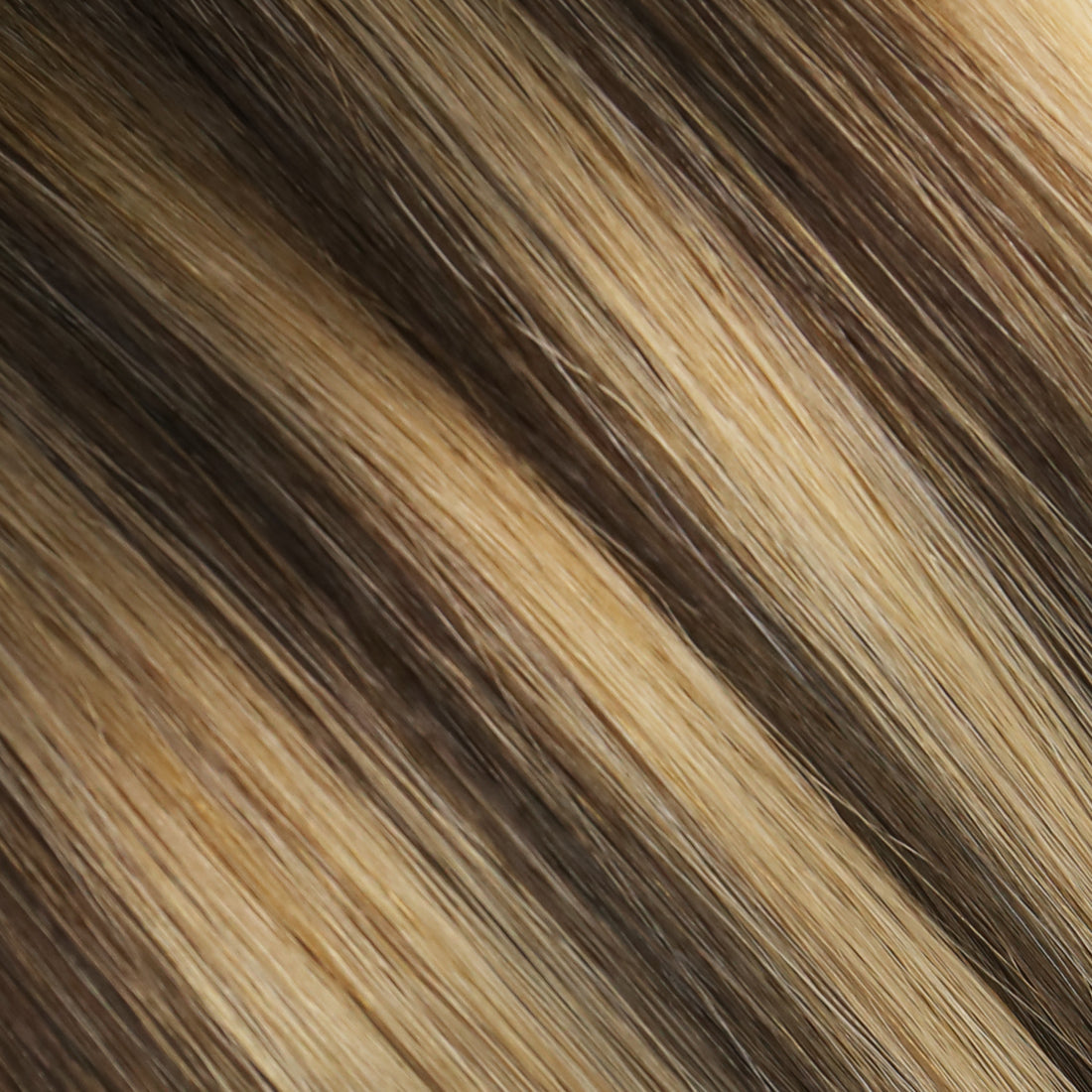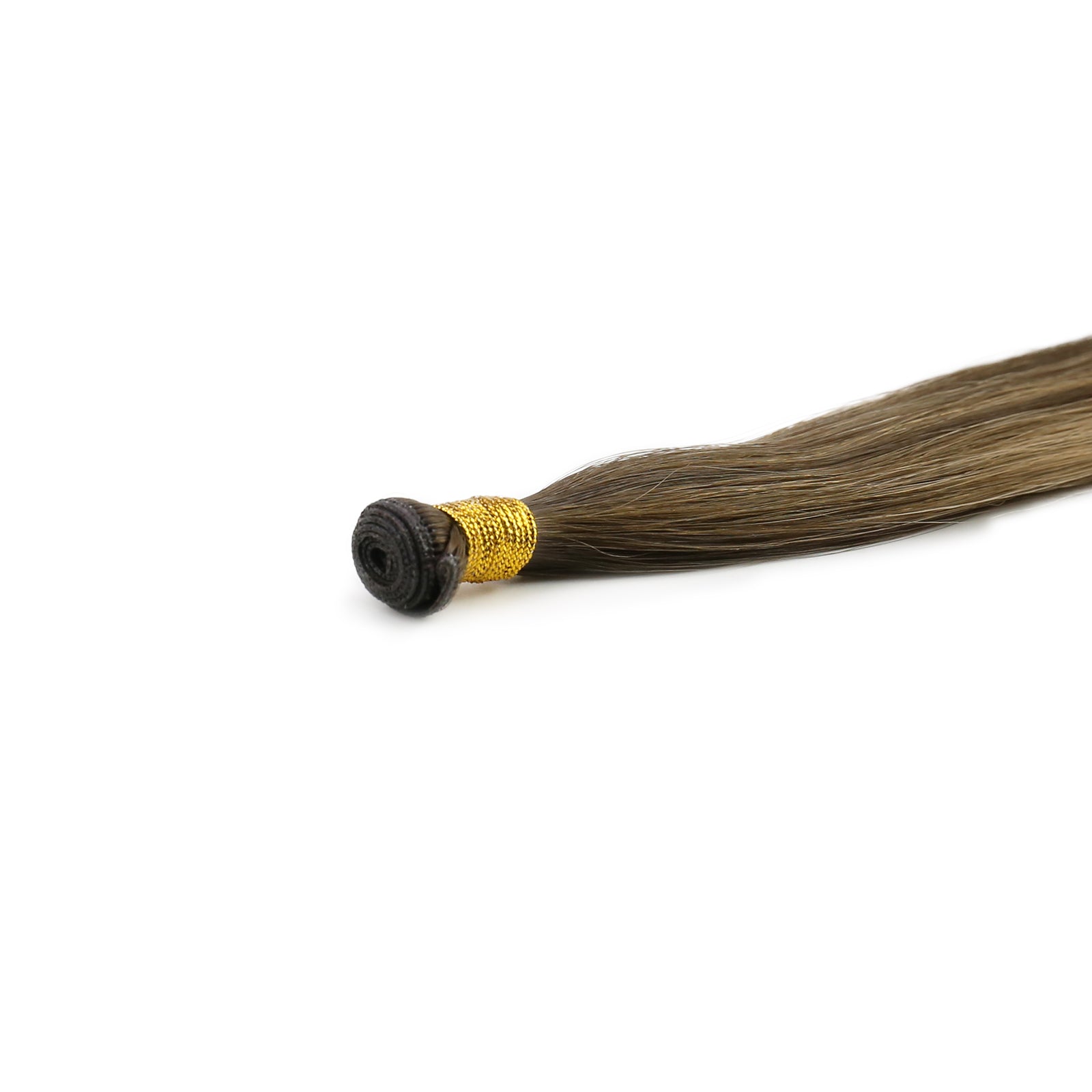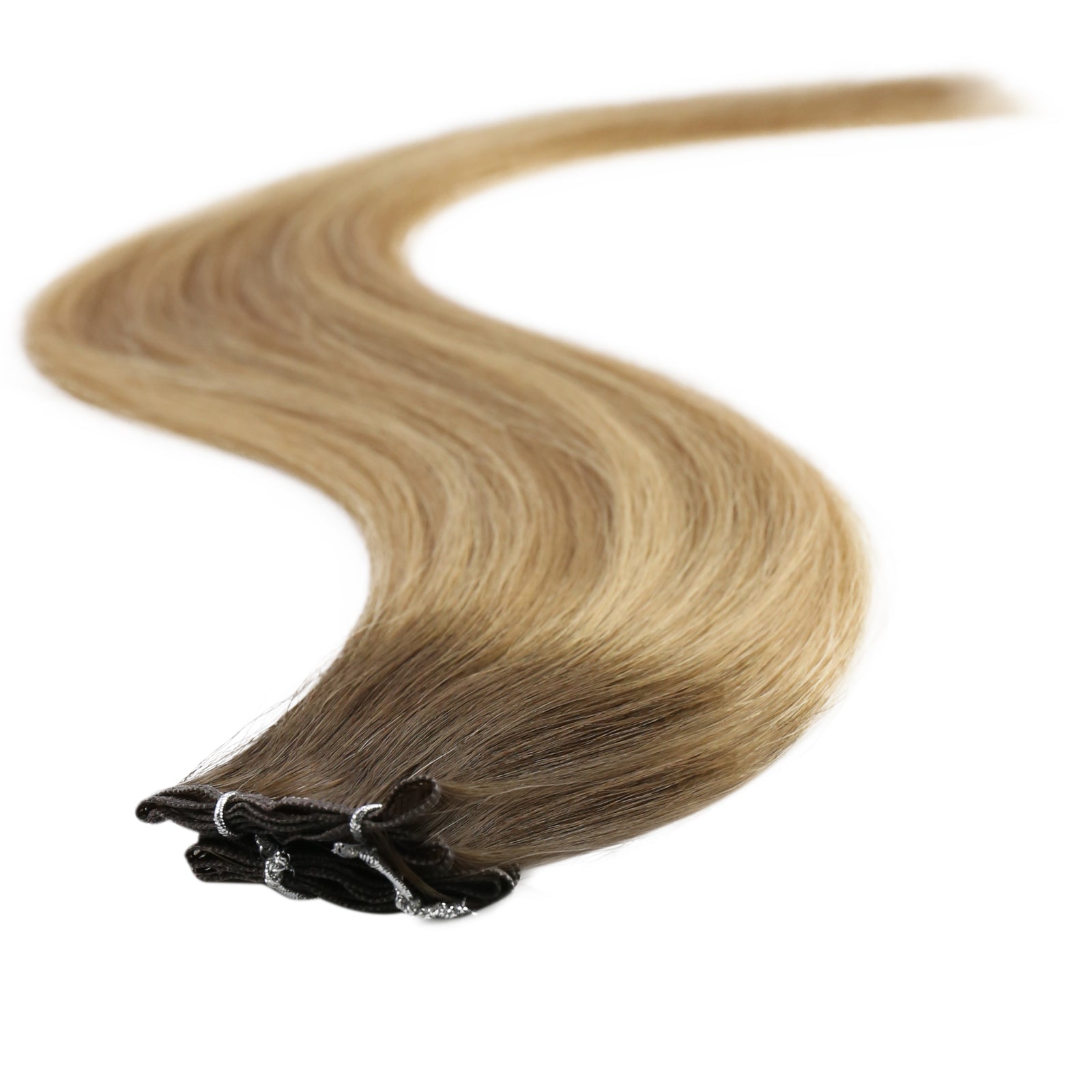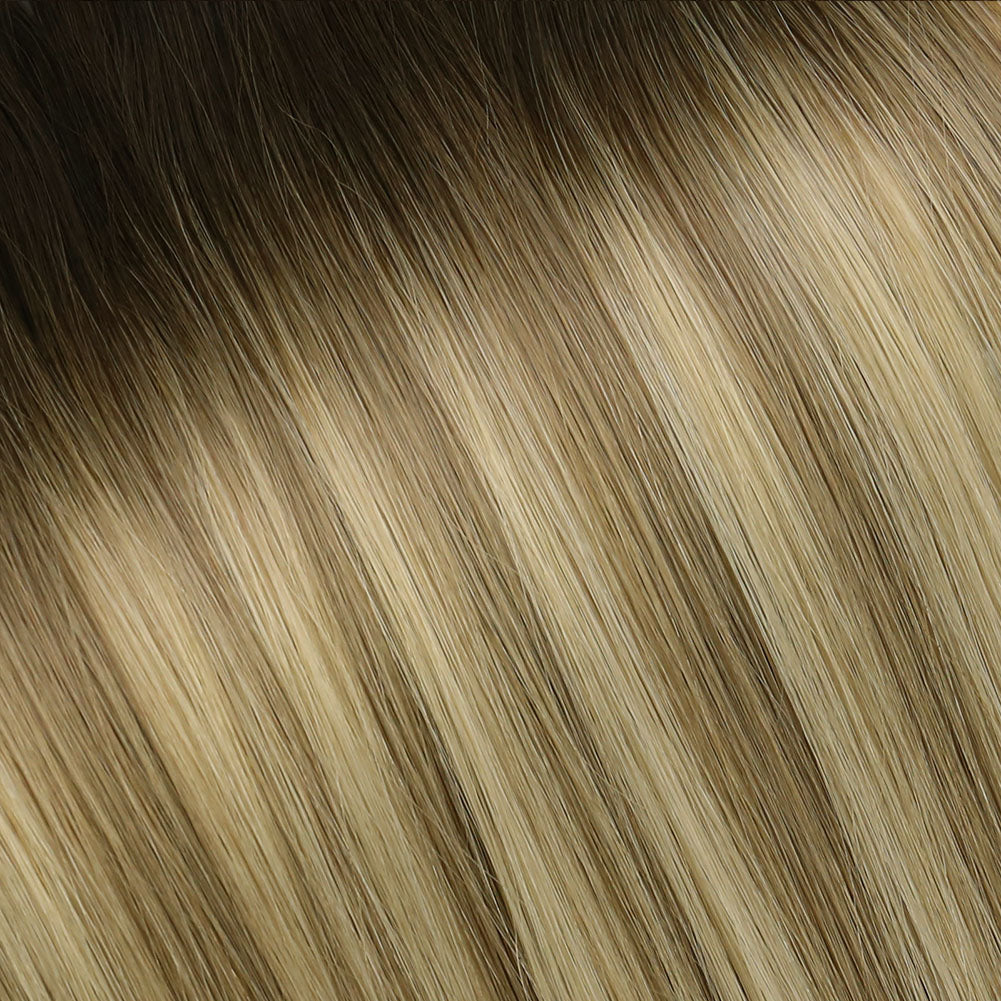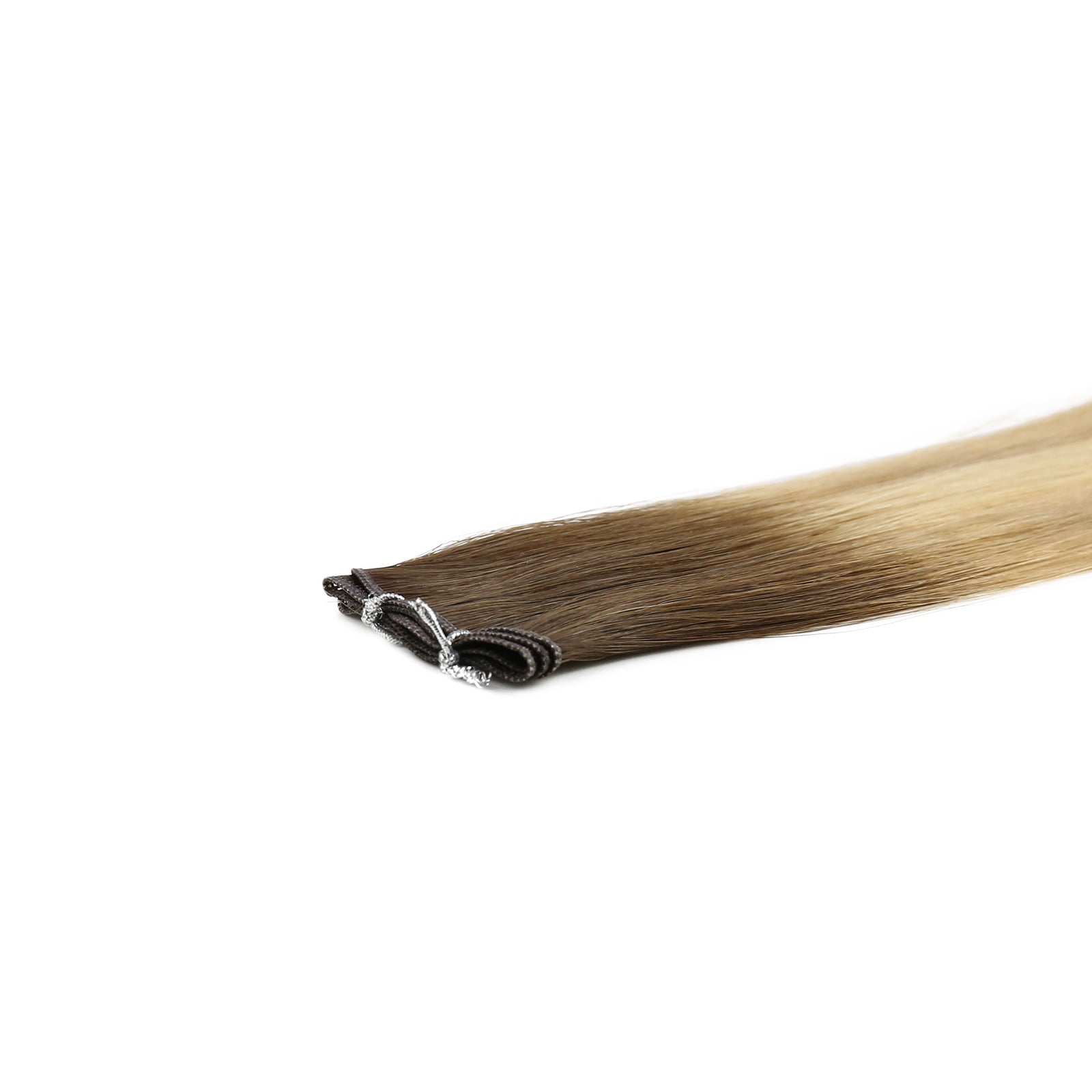With hair extensions gaining more and more popularity in the field of fashion nowadays, hair extensions thrives and breeds several types like tape in extensions. In terms of such brand-new types, many of us have a thought of how long they last. On this topic, the post will give you a brief hint.
The lifespan of the tape in extensions depends on several factors
Technically, if tape in hair extensions are cared for correctly, they can last between 6-8 weeks. However, there are various factors having the bearing on the lifespan of a particular tape in extension.
Different quality
Of all the factors, quality is an essential element to depend the longevity of a tape in hair extension, which requires us to pick a reasonable product with high quality that can be applied at least for six weeks.
Higher-quality tape-in extensions use superior adhesive materials that provide a stronger bond between the extension and natural hair. This strong adhesive helps prevent slippage and ensures that the extensions stay in place longer. Lower-quality adhesives might weaken more quickly, leading to premature falling out or shifting.
Additionally, premium tape-in extensions are made from high-grade, ethically sourced human hair or high-quality synthetic fibers that mimic the look and feel of natural hair. Higher-quality hair tends to be more durable and resistant to damage from styling and environmental factors. On the contrary, cheaper extensions might use lower-quality hair that can become tangled, frizzy, or damaged more quickly.
Different types
Tape in extensions have different types, varying from length and thickness to color and shape, with different types, they are accordingly made from various texture.
For example, extensions made from high-quality human hair generally last longer because they can be styled and treated like natural hair. They are more resistant to damage from heat, chemical treatments, and daily wear, making them a long-lasting choice. While typically less expensive, synthetic hair extensions may not hold up as well under heat styling or frequent washing. They often have a shorter lifespan and can become damaged or look worn out more quickly.
What’s more, extensions with thin and flexible tape are less visible and move more naturally with your hair. This construction reduces strain on your natural hair and minimizes discomfort, contributing to a longer lifespan. Extensions with thicker or less flexible tape however, may be more noticeable and can cause discomfort. They can also put additional stress on your natural hair, potentially leading to faster wear and the need for more frequent replacements.
Installation techniques
Applying techniques are also crucial to the longevity of tape in extensions. Professional skills and meticulous craftsmanship play a significant role in maintaining the basic lifespan of tape in extension. Therefore, if a tape in extension is taped correctly and perfectly, the fundamental longevity can be guaranteed.
under such circumstance, extensions applied by a skilled stylist are generally more securely attached and less likely to cause damage. Proper application helps ensure that the extensions last as long as possible. If you apply tape-in extensions yourself, the bond might not be as secure or even, which can impact their longevity. Professional application often results in a better fit and longer wear.
How to prolong the lifespan of tape in hair extensions
Since tape in extensions are some sort of cosmetic products that are attached to our human hair, they have no chance to linger on our hair permanently, with the power of their sticks some day to diminish. Nevertheless, there are still many tips to maintain and prolong their durability.
Tips to wash tape in extensions
Washing tape-in extensions properly is essential for maintaining their appearance and extending their lifespan. Here are some tips to ensure you care for your extensions effectively:
-
Use the Right Products: Opt for a gentle, sulfate-free shampoo to avoid stripping the hair of natural oils and to prevent weakening the adhesive. Sulfates can cause the adhesive to break down more quickly. A lightweight, silicone-free conditioner is also necessary. Just apply it only from mid-length to ends. Avoid applying conditioner directly to the tape area to prevent loosening the adhesive.
-
Avoid Over-Washing: Wash your hair less frequently to prevent excessive exposure to water and products, which can weaken the adhesive. Washing 2-3 times a week is generally sufficient. You can also use dry shampoo between washes to keep your hair looking fresh without needing to wash it as often.
-
Gentle Washing Technique: Rinse your hair thoroughly with lukewarm water before applying shampoo to remove any excess product and dirt, as hot water can weaken the adhesive over time. When Applying shampoo, be gentle to your scalp and hair. Avoid scrubbing or massaging the roots aggressively to prevent disturbing the adhesive. If using conditioner, focus on the ends and mid-lengths and keep away from the roots and tape areas. using your fingers or a wide-tooth comb to distribute it evenly.
Tips to dry tape in extensions
Drying tape-in extensions properly is key to maintaining their quality and ensuring they last as long as possible. Here are some tips to help you do it right:
-
Gently Pat Dry: After washing your hair, gently pat your extensions dry with a towel. Avoid rubbing or tugging on them, as this can cause them to become tangled or damaged.
-
Avoid Heat: Try to avoid using heat on the tape-in extensions. This means skipping blow dryers or hot styling tools right after washing. Heat can weaken the adhesive and affect the lifespan of the extensions.
-
Air Dry: The best method is to let your hair air dry. Use a wide-tooth comb to gently detangle any knots while your hair is still damp, working from the tips towards the roots.
Tips to take daily care of tape in extensions
Taking daily care of tape-in extensions involves a mix of proper maintenance and mindful habits to keep them looking their best and ensure they last. Here are some tips for daily care:
-
Use a Silk or Satin Pillowcase: If you sleep on a silk or satin pillowcase, it helps reduce friction, which can minimize tangling and damage to the extensions.
-
Brush Gently: Use a brush specifically designed for extensions or a wide-tooth comb to gently detangle your hair. Brush from the ends upwards to avoid tugging at the roots.
-
Avoid Chlorine: If swimming, consider wearing a swim cap or applying a protective leave-in conditioner to minimize exposure to chlorine, which can weaken the adhesive.
-
Schedule Regular Maintenance: Visit your stylist for regular maintenance appointments to check the condition of your extensions and ensure they are properly repositioned if needed.
How do tape in extensions get removed?
Removing tape-in extensions is a delicate process that should ideally be done by a professional stylist to avoid damaging your natural hair. However, if you're considering removing them yourself, here’s a general guide on how it's done
What you'll need:
Extension remover solution(specifically designed for tape-in extensions)
Wide-tooth comb
Cotton balls or pads
Towel
Shampoo and conditioner
Hair clips
Steps for removal
-
Start with Dry Hair: Make sure your hair is completely dry before starting the removal process.
-
Divide Your Hair: Use hair clips to section your hair, making it easier to access each tape-in section.
-
Apply the Extension Remover: Using a cotton ball or pad, apply the extension remover solution directly to the adhesive tabs of the extensions. Follow the product instructions carefully.
-
Let It Sit: Allow the remover solution to sit for the amount of time specified in the product instructions. This usually softens the adhesive.
-
Loosen the Tape: Gently use your fingers or a wide-tooth comb to work the tape free from your natural hair. Be careful to avoid pulling or tugging, which could damage your hair.
-
Clean the Area: Use more of the remover solution to clean any leftover adhesive from your natural hair. You can use cotton balls or pads to help with this.
-
Wash Your Hair: Wash your hair thoroughly with shampoo to remove any residue from the remover solution. Follow up with conditioner to keep your hair hydrated.
-
Dry and Detangle: Pat your hair dry with a towel and let it air dry. Avoid using heat tools immediately after removal. Then use a wide-tooth comb to gently detangle your hair, starting from the ends and working your way up.
-
Give Your Hair a Break: Allow your natural hair some time to recover before reapplying extensions.
-
Avoid Heavy Products: For a few days, avoid heavy styling products and treatments that could weigh down or damage your natural hair.
Conclusion
Generally speaking, if you take good care of your tape-in extensions and follow the recommended maintenance schedule, they can remain in good condition for the full 6 to 8 weeks, and then you can either replace them or reposition them for continued use.
